Weeds are an inevitable part of gardening life. While gardening tends to be stress-relieving, weeds can cause a lot of stress—especially on your body. Thankfully, there are plenty of sanity-saving (and back-saving) tips and tools to keep you calm and ache-free.
But first, what exactly is a weed? Some say it is an unloved flower; others, simply a plant in the wrong place. For practical purposes, we will define it as a plant that is not valuable to you and takes up resources for the plants that are valuable to you.
Now that we have established what a weed is, what do we do about it? Foremost, just say a hard no to herbicides, which not only kill the weed but can also harm soil health, animals, and humans. Instead, grab the right tool (scroll down to see our guide to types of weeders) and heed our weeding tips below.
Weeding Tips:
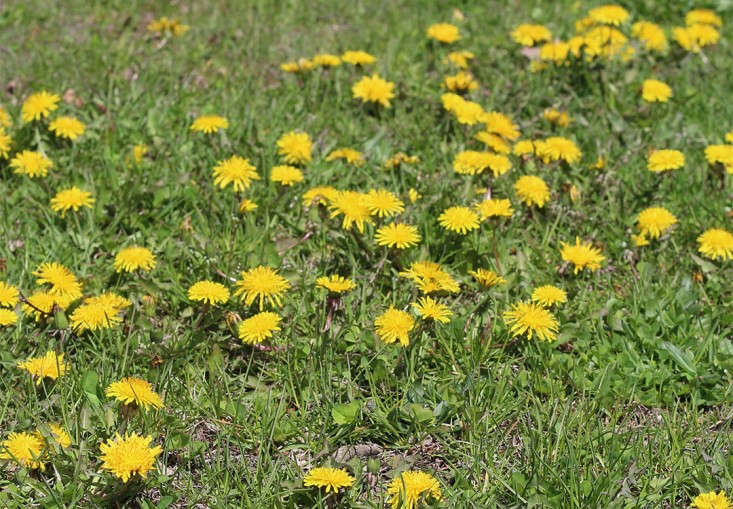
- Know your weed. Perennial, biennial, and annual weeds can be managed differently. For perennials and biennials, you need to get the root. All of it. Leave just a bit of root behind, and you’ll have a new plant next year. Examples are mugwort and dandelions. Annual weeds, such as pigweed and lambsquarter, must be pulled before they go to seed. By not letting annual (and missed biennial) weeds flower and go to seed, you are removing the next year’s weeds. Keep in mind, some weed seeds remain viable for years…because that’s what weeds do! But by removing what you can now, you reduce your overall future weed pressure.
- Weed regularly. Small weeds, small effort. Do remember that during the summer, everything grows faster, including weeds. This could mean weeds popping up weekly to every couple of days during the growing season. From our experience, 10 minutes of weeding every couple of days is far easier than an entire weed-a-thon weekend.
- Wear gloves. Weeds can be thorny, poisonous, or cause contact dermatitis.
- Weed after rain. If you’re pulling weeds by hand, the best time to do it is after a decent rain, which loosens up the soil. Remember to pull from the base and not from the top.
- Add mulch or plant ground cover. Both can keep weeds down and retain soil moisture. Simply filling your beds with more native plants will also help crowd out the weeds.
- Don’t till your soil. It can bring up long dormant weed seeds to the surface where they can cause trouble.
- Large swathes of weeds? Consider solarization or occlusion. (See The Garden Decoder: What Is ‘Occultation’?)
Weeding Tools:
There are a variety of tools as there are a variety of weeds! Here are some popular types of weeders.
Hori Hori
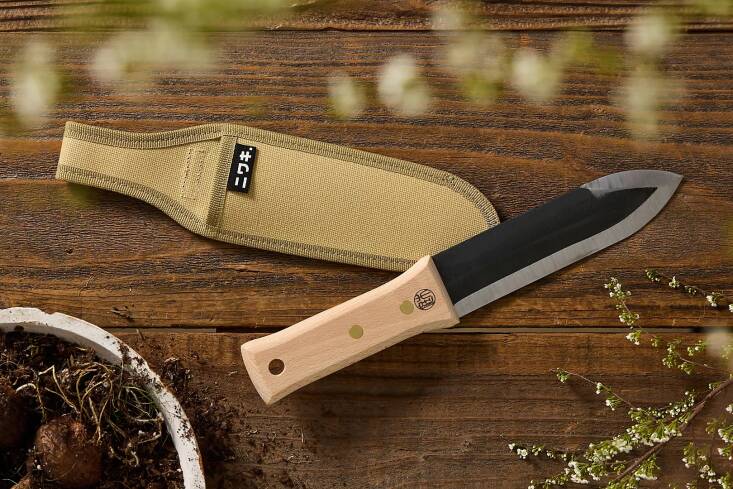
My favorite weeder is my hori hori knife because it can do so much and just it’s one tool. I can plant, prune, harvest, and weed with it. It is especially useful for weeds with thick mats of roots like mugwort.
Hand Trowel
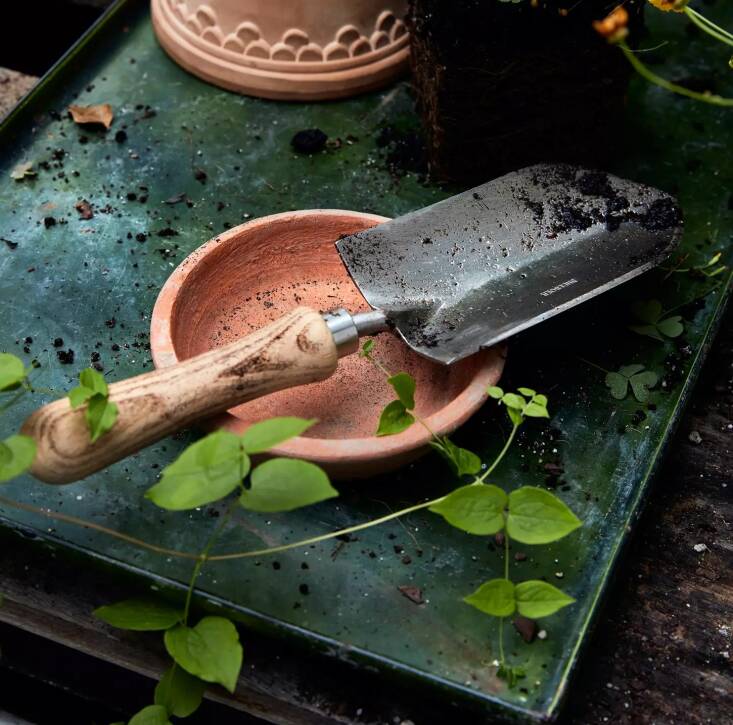
Hand trowels can be used for removing perennial weeds, and you probably have one of them already. It is great for removing shallow-rooted weeds like broadleaf plantain.
Stirrup Hoe

Stirrup hoe is aptly named. At the end of a long pole, there is a blade shaped like a saddle stirrup. The blade is worked just under the soil line to sever the roots. This is best for use in cultivated rows in your vegetable garden.
Dandelion Weeding Fork
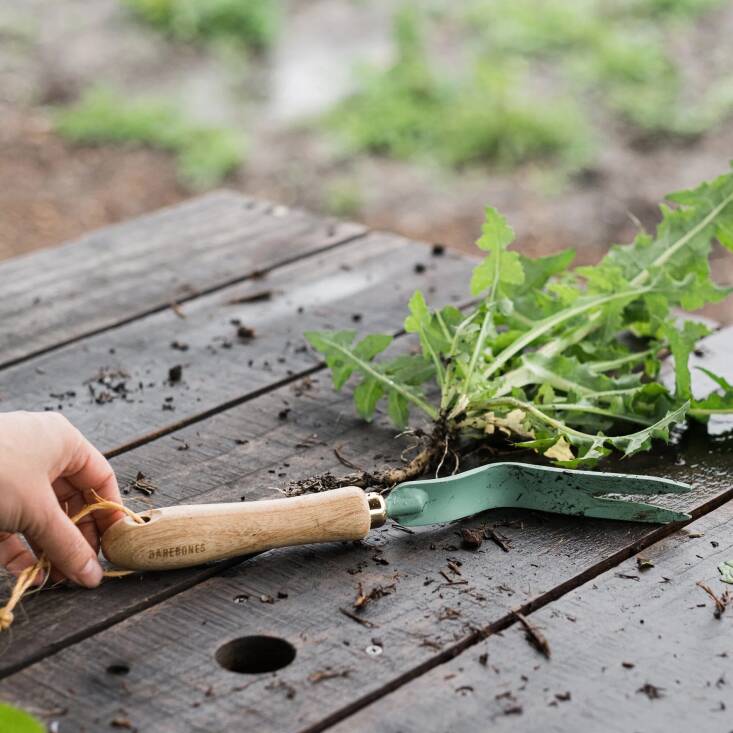
Dandelion removers have a long-forked spike to remove their namesake’s long taproot.
Crack Weeder
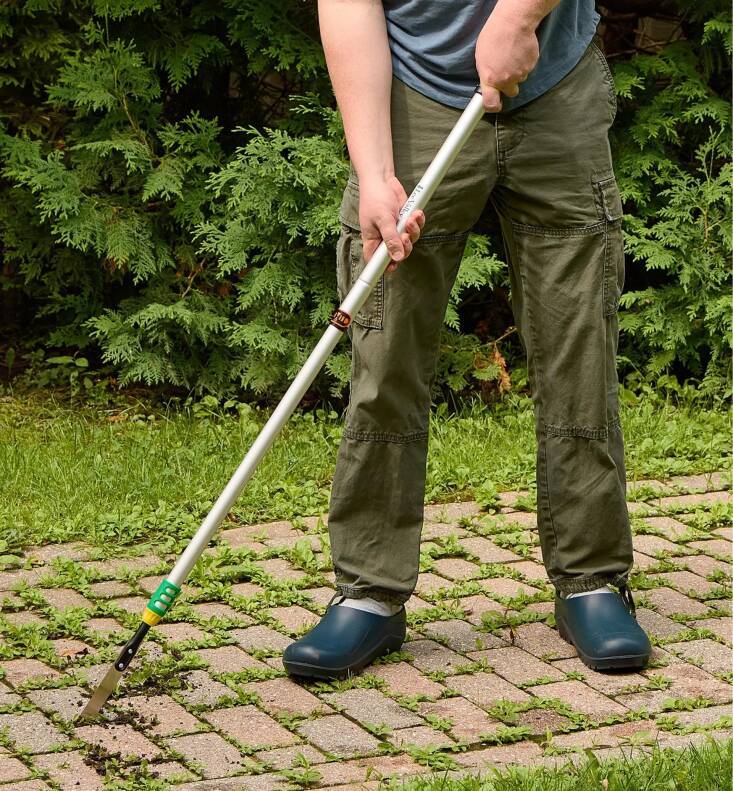
Crack weeders have a thin hooked blade at the end of a long pole, perfect for getting the weeds that grow in the cracks of your patio.
Japanese Weeding Sickle
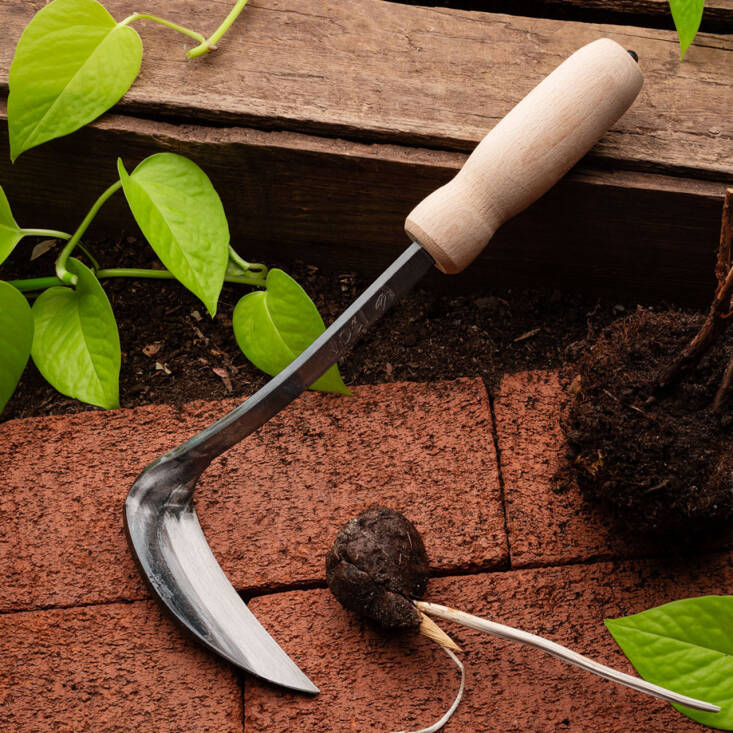
Japanese hand weeding sickle/hoe come in many shapes. What they have in common is a sickle-like blade that is ideal for geting into tight spaces or when you need to be careful around the plants you want to keep.
Grandpa’s Weeder
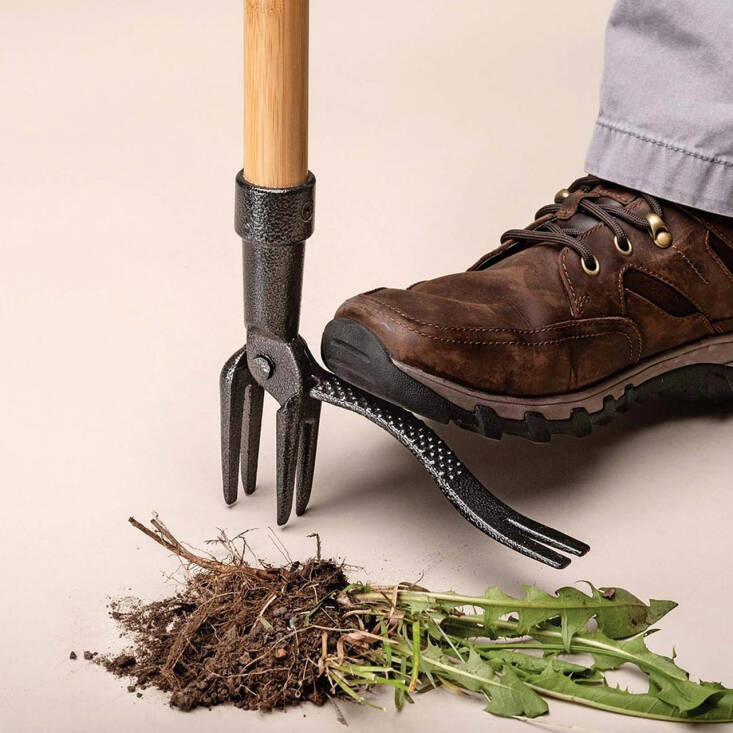
Stand-up weeder, also known as Grampa’s weeder, pulls out the weed by the roots. At the end of the long handle, there is a set of prongs on a hinge with a foot lever. You place the prongs in the soil around the plant, and step on the foot lever to close them around the plant and pull. Great for removing dandelions and saving your back.
Weed Torch
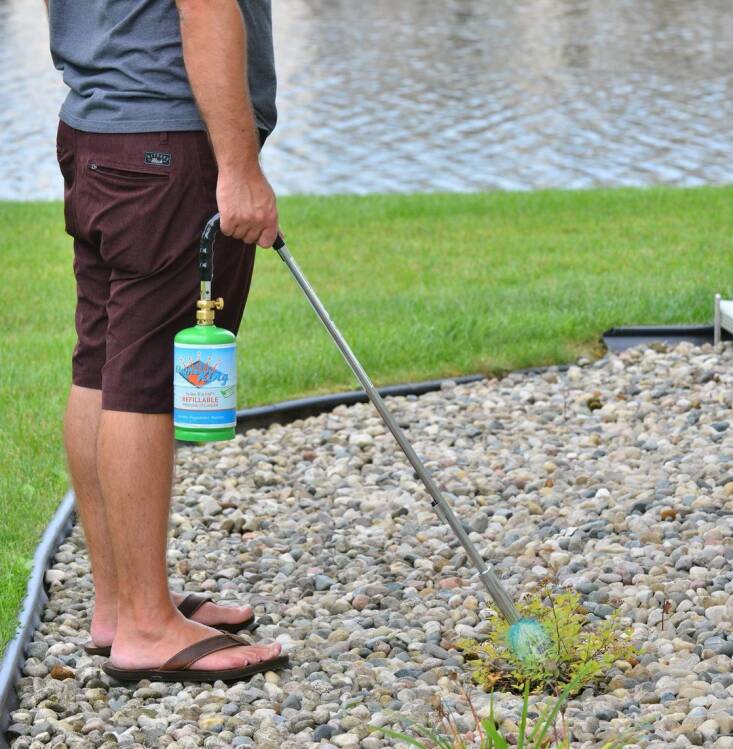
The weed torch is an oddly satisfying way to deal with weeds. It needs to be used with extreme care and by adults only. It works best for gravel driveways. And since it boils the top part of the plant, you may need several passes over a week or two to completely kill the weed. Keep in mind, it should never be used near a structure, during dry seasons, or under fire warnings. Do not use on toxic plants such as poison ivy or giant hogweed; Inhaling fumes from either could land you in the ER.
See also:
- 24 Edible Weeds: This Spring, Turn Problem Plants Into Seasonal Treats
- Weed Wisdom: What 10 Common Weeds Are Trying to Tell You
- Landscaping 101: A Garden Arsenal to Fight Weeds


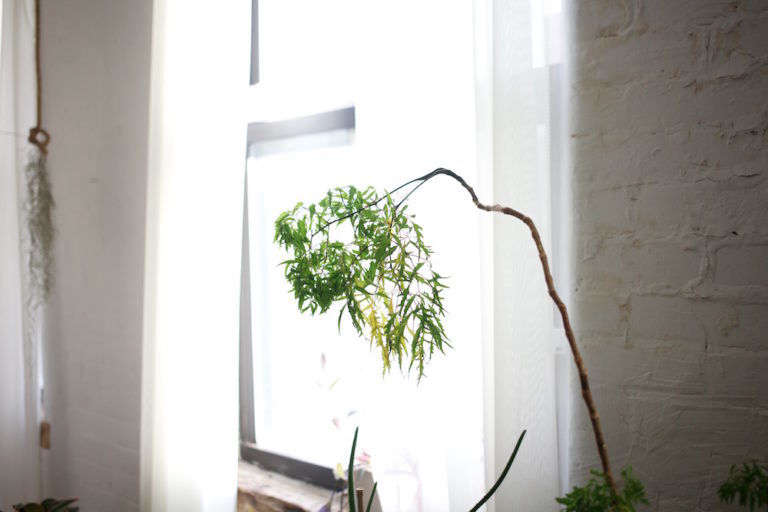

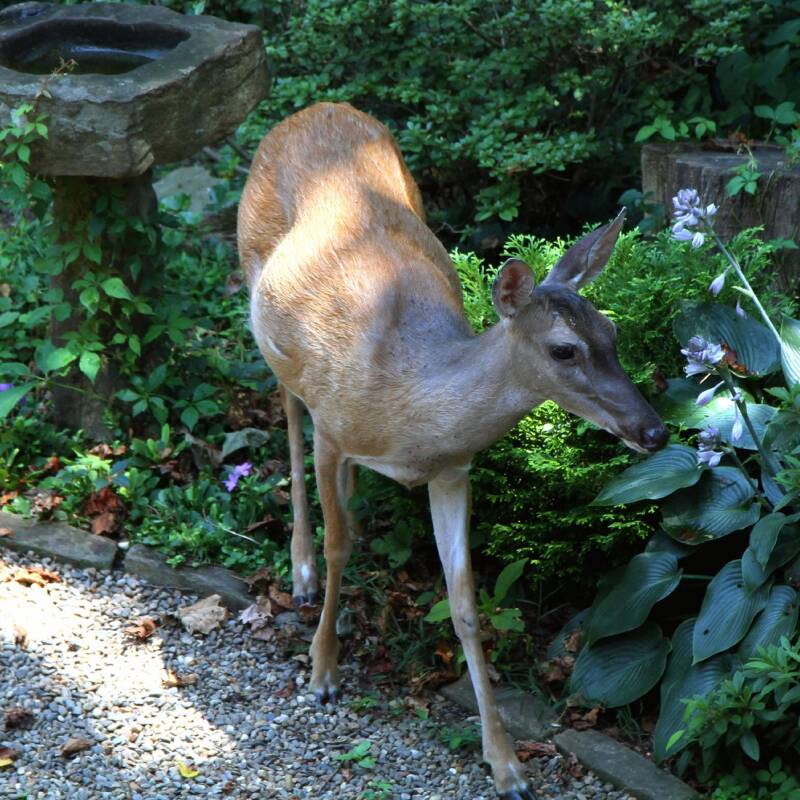



Have a Question or Comment About This Post?
Join the conversation